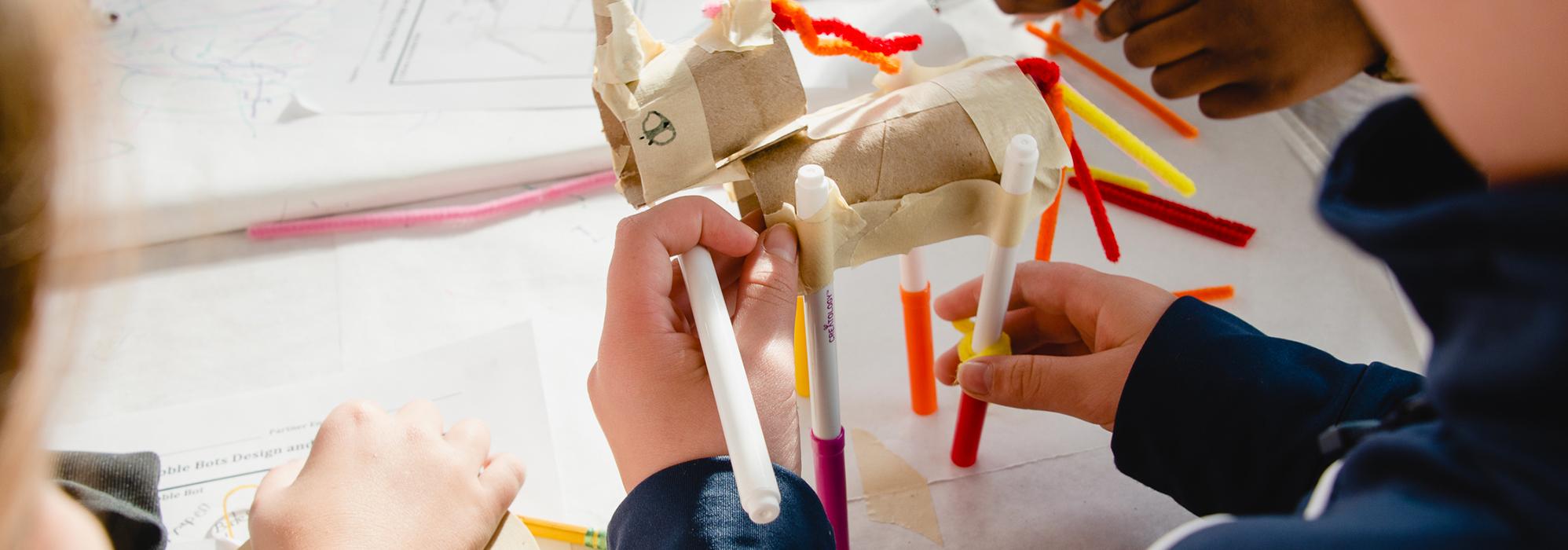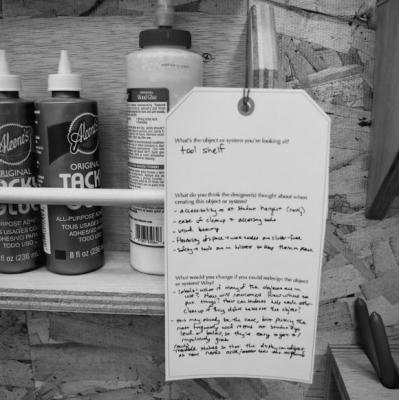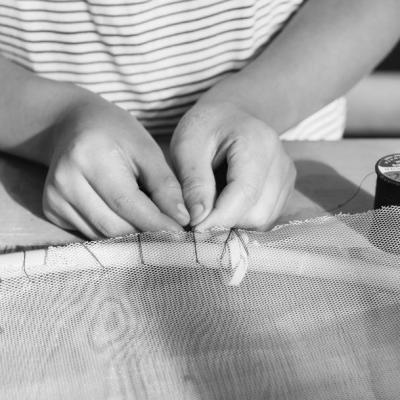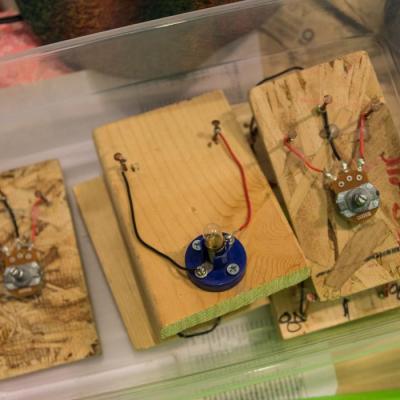
Tinkering Towards a Definition of Tinkering
How do you define tinkering? In this post, Agency by Design principal investigator Shari Tishman tinkers towards a definition of tinkering that considers standard text book definitions, examples from real life tinkerers, and a consideration of the “symptoms” of tinkering.
How do you define tinkering? This question is important to the Agency by Design team, because we’re interested in trying to understand how people think through tinkering. Through our visits to schools like Brightworks, the Athenian School, and the Nueva School, our many great conversations with folks associated with the maker movement, and now with our new tinkering table, we’re convinced that tinkering is a cognitively distinct mode of learning. So the question of how to define it raises an interesting challenge: What would it be like to tinker toward a definition of tinkering? Gever Tully, founder of Brightworks and the Tinkering School, says that tinkering often begins when you have a model of something that gets you started, but you know it isn’t right yet. So let’s start by looking at a definition of tinkering that isn’t yet right, and see where it leads. According to thefreedictionary.com, to tinker is to “make unskilled or experimental efforts at repair.” According to Merriam-Webster, it is to “repair, adjust, or work with something in an unskilled or experimental manner.” I think about the visitors to the Exploratorium’s Tinkering Studio who experiment with carboard autmota or soft circuitry, or the students at the Tinkering School who tinker their way through complex, open-ended building projects—and these definitions feel far too thin. They fail to capture the “messing around” aspect of tinkering and its playful dimension. Nor do they capture the maker/DIY movement’s celebration of the pleasures of tinkering or its power as a mode of learning. Plus, there’s a whiff of old fashioned prejudice in the emphasis on unskilled effort.
Tinkering moves along by experimenting with various approaches, so let’s try another definitional approach: synonyms. Here are the synonyms for tinkering offered up by the online thesaurus fiddle with, dabble, doodle, fix, mess with, monkey, muck about, niggle, play, play with, puddle, putter, repair, take apart, toy, trifle with. This approach feels like progress. Terms like “fiddle with,” “mess with” and “play with” seem to get at the flexible, iterative process that’s at the heart of tinkering, though the terms “trifle with” and “niggle” still have an air of condescension in their suggestion that tinkering is a lightweight activity. Let’s keep tinkering…

Another way to approach the definition game is to look for exemplars—real people who embody the character trait in question. As I think about exemplary tinkerers in my own life, three friends immediately come to mind. The first I’d call a tinkerer in the classic sense. He has a garage bursting with tools and saved parts, and most of the surfaces in his house are occupied by projects in various stages of completion. He has an incredible ability to envision different options and solutions (call it mental rapid prototyping), and he has a genius for bricolage—for making things with whatever materials are at hand (duct tape is almost always part of the process). The second friend who comes to mind is a tinkerer of ideas. A scholar in the field of education and a philosopher at heart, he loves to analyze the components of educational challenges and ideas and fiddle with ways to reframe them. His tinkering projects are theories and conceptual frameworks: “What would it be like to look at the learning process through the lens of baseball?” “How can an educational system be designed to educate for the unknown?” My third tinkering friend is a teenager, and he’s the kind of young person that fits easily into today’s hacker culture. A self-defined geek, he loves messing around with computers (both hardware and software), and much of his learning and sharing takes place online. But he’ll tinker with anything that’s at hand, and delights in making things that are whimsical, inventive, and often musical (my recent favorite is an Aeolian harp he made from an aluminum gutter).
What do these three friends have in common? They all take great pleasure in the process of making things, they’re eager to experiment with new approaches, and they aren’t deterred when things don’t work out as planned. Also, they are all quite purposeful in their pursuits—none of them seem to tinker without a specific goal in mind. A difference among them may be that my two older friends tend to focus on making useful things—a mooring line for a sailboat that doesn’t chafe; an educational framework that doesn’t dumb down the curriculum. Interestingly, my younger friend’s tinkering is inspired as much by the pursuit of nifty as by the pursuit of utility. Perhaps it is a generational thing; the niftiness factor seems to be very much a part of today’s tinkering culture.

Standing back, I notice that looking at exemplars seems to be a promising way to think about tinkering. Perhaps this is a good place for this experiment in definitional tinkering to stop. But tinkerers tend to keep tinkering, and the exemplars approach brings to mind a related but less common variation of the definition game: symptomology. Consider the many symptoms of the flu: fever, headache, sore throat, ear ache, and so on. Or, more pleasantly, consider the many symptoms of love. Not everyone who gets the flu or falls in love gets every single symptom, but most people get many of them, and the particular composition of symptoms tend to vary across cases. So what are the symptoms of tinkering? We’ve touched on several already: experimentation, fiddling around, love of process, purposefulness, inventiveness, playfulness. As I think back on all we’ve read and seen through our work on the AbD project, many more possible symptoms come to mind: curiosity, engagement, focus, perseverance, thinking-through-doing, pleasure in process, interest-driven skill development (think weekend welding classes), a hacking mindset, functional flexibility, disciplinary boundary-crossing, rapid prototyping, learning from failure. I’ve also noticed that a common symptom seems to be pleasure in personalization: Tinkerers generally don’t aim to make things that are standardized. And a new symptom seems to be developing: a collaborative mindset. Despite the old fashioned stereotype of a tinkerer as unskilled mender of things working solo in a backyard workshop, today’s tinkerers seem to flourish in a culture of collaboration that includes everything from Maker Faires and tinkering schools to computer clubhouses, open source programming, and hobbyist blogs.
This brief experiment in definitional tinkering may not have produced a new definition of tinkering, but it has certainly given me some new ideas. And the experiment doesn’t seem over: I’m particularly mindful of today’s fresh interpretation of tinkering that underscores the value of collaboration and learning from others. So how would you define tinkering?







